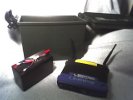|
Well if they actually did calibrate them out of the USA band and they only made a tagging change between the USA and INTL version to signal the permmited band then that is some good news I didn't know about, and then yes this could open up some more channels. If you want to test it OpenWRT describes how to change RF channels, and our code for the UI is in the repo to review.
I will note that the channels in question will NOT be contention free. ISM is not the same thing as Part 15. ISM band may stop at 5725 but Part 15 use of 802.11 is permitted below 5725 in the USA (U-NII 2C band) This is also the RADAR band.
You will need to be careful to check with local government in this band before usage (I'm all for opening it up though if we have people without government using it and hardware supports it) Details:
The U-NII-2C band is allocated on a primary basis to the Radiolocation Service for Federal operation. The sub-band at 5.47-5.65 GHz band is allocated on a primary basis to the
Radiolocation Service for non-Federal operation, and on a primary basis to the Maritime Radionavigation
Service for both Federal and non-Federal operations. The 5.47-5.570 GHz band segment is allocated on a primary basis to the Earth Exploration-Satellite (active) and Space Research (active) Services for Federal operation and on the secondary basis for non-Federal operation. The 5.6-5.65 GHz band segment is allocated on a primary basis to the Meteorological Aids Service for both Federal and non-Federal operations. The band segment at 5.65-5.725 GHz is allocated on a secondary basis to the Amateur Radio Service for non-Federal operation. Again that said though, if the hardware supports it I wouldn't personally mind seeing the channels to be listed, they just still come with a STRONG warning about checking for local radar facilities, this band is known to be actively used for government radar in this subband.
I don't have time to test lab them myself at this time as I'm working bigger tickets right now your welcome to test away. Make sure to do long distance tests to be sure they actually work in the field.
|
